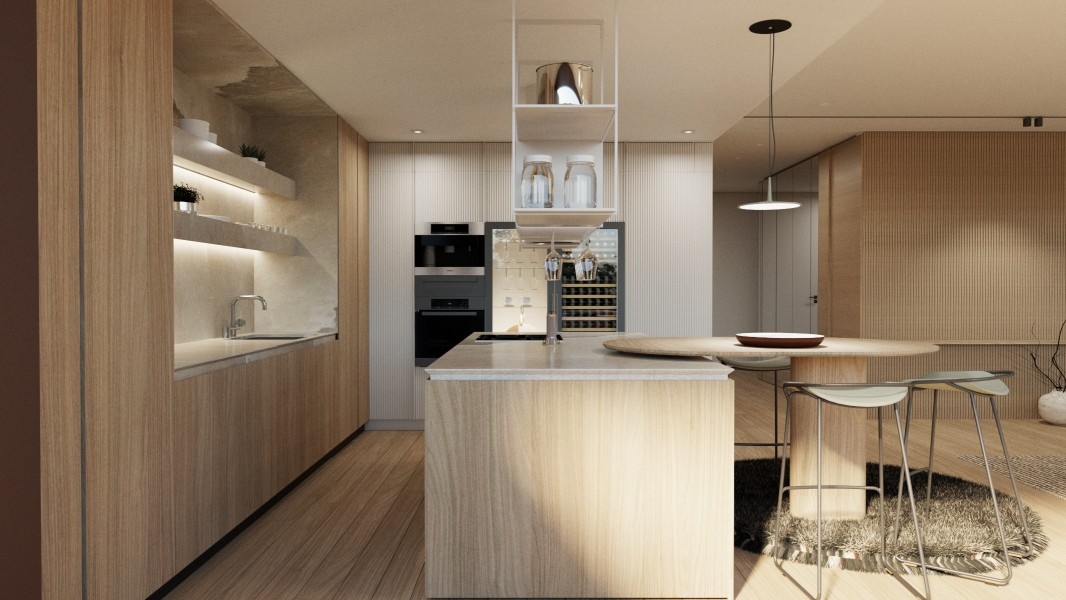 Photo: Boris Nikolašević
Photo: Boris NikolaševićThe modern kitchen is completely or partially open to the living room area, adapted to today's fast lifestyle, which affects its functionality, the choice of materials and colors, and the approach to elaborating on details. Despite the fact that the way we use the kitchen has changed over time, its importance in the home has not. In a functional sense, it must be simple, practical, and logical. Ease and availability for quick food preparation are a priority that, in addition to harmony in the arrangement and relationship of kitchen elements as well as the choice of materials and colors, make it beautiful.

Marina Lazović, architect, Inka Studio
Of course, the needs and habits of clients are very different, and before any design, it is necessary to listen to and understand them well. Clients often cannot even imagine what possibilities they have or how to realize what they would like, so they sometimes need help understanding their own needs. That is why the first step of getting to know and understand each client is critical in order to find the best possible solution for their kitchen space.
OPEN KITCHEN CONCEPT
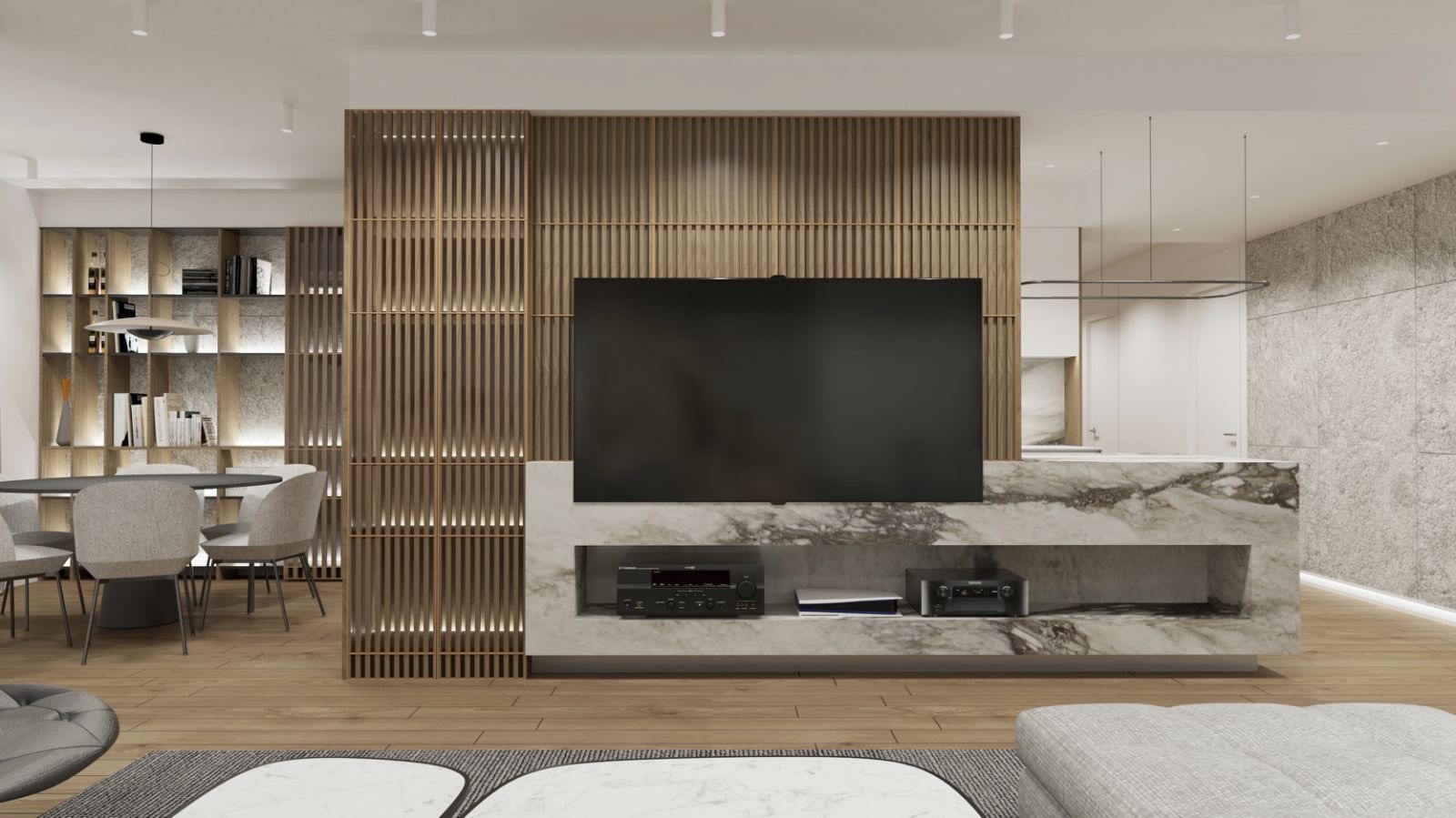
Apartment D, Ivankovačka / Photo: Boris Nikolašević
The position of the kitchen is mainly determined by the position of the entrance. It should be relatively close to it but also sufficiently sheltered. There are no fixed rules. The kitchen is mostly the first point of contact with the living area, and, in an aesthetic and functional sense, it is an inseparable part of that area.
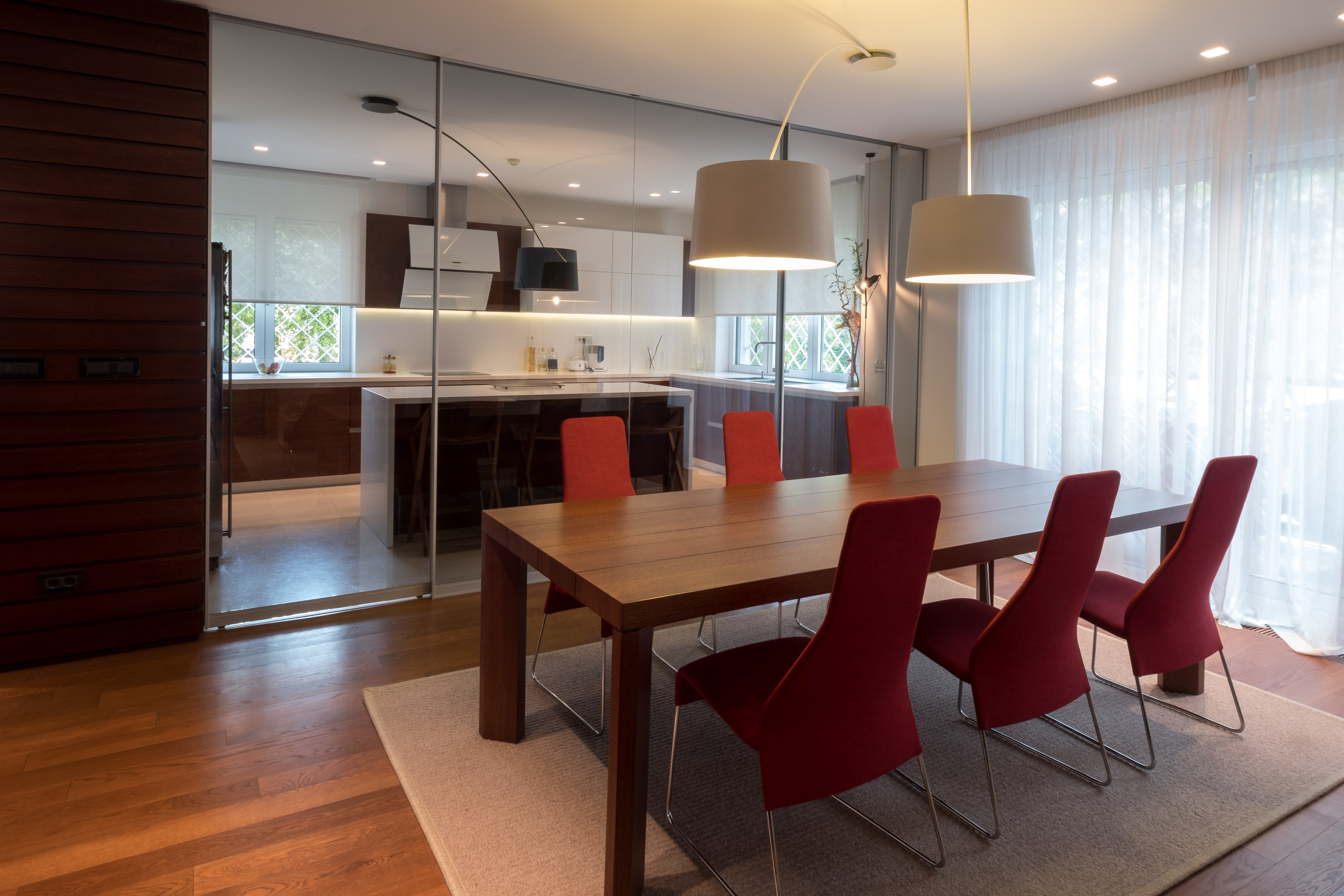
Apartment S, Senjak / Photo: Boris Nikolašević
Even when we had a request to completely close the kitchen, visual contact with other rooms was preserved through transparent glazed surfaces. The technological development of increasingly high-quality fittings has made it possible to quickly and easily completely hide kitchen cabinets with accordion doors, packed into kitchen elements. This is a trend that is steadily gaining popularity.
KITCHEN ISLAND AS A GATHERING PLACE
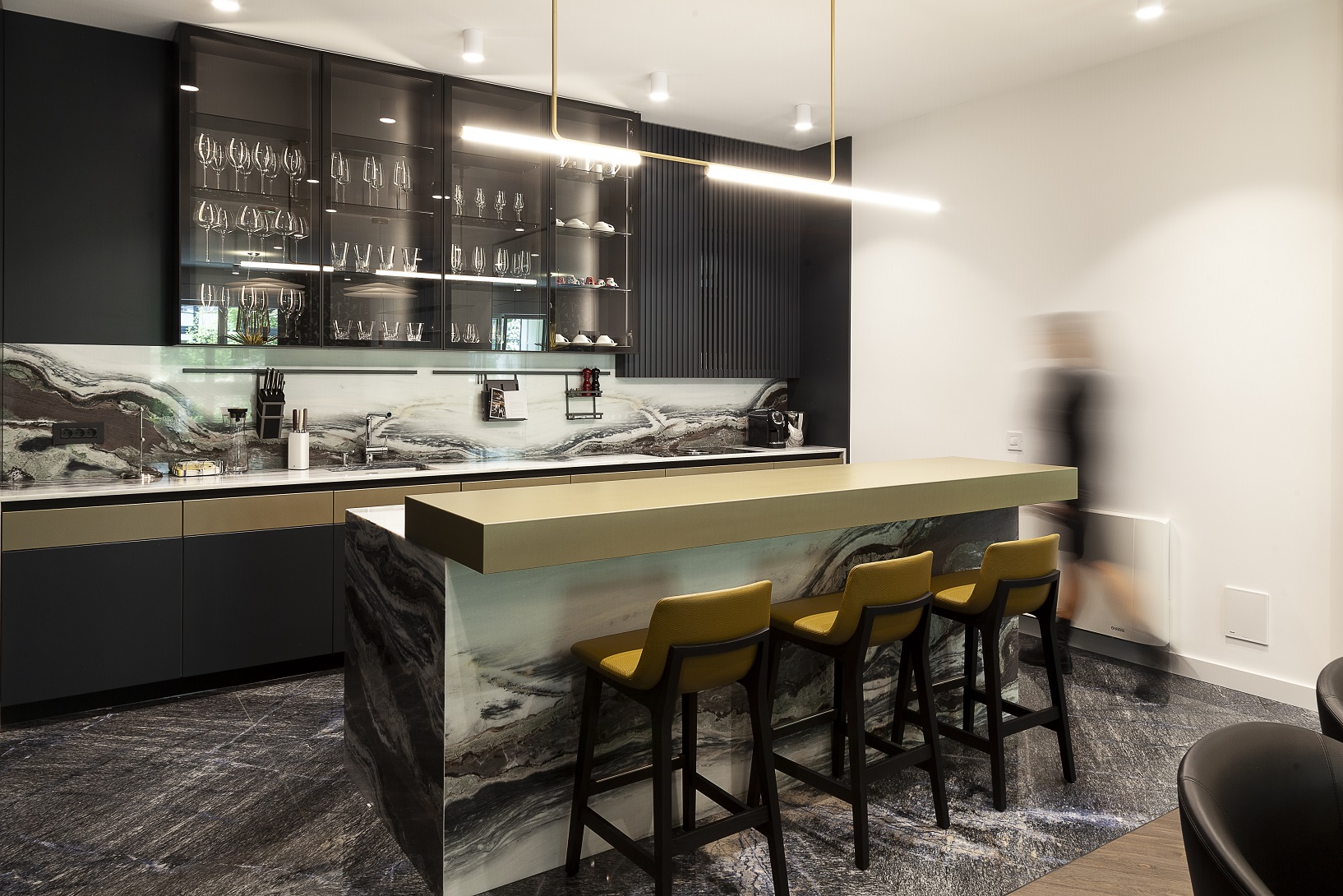
Apartment K, Vračar / Photo: Boris Nikolašević
In addition to the functional requirement that the island, as a contact between the kitchen and the dining room or living room, partially visually obscures and physically defines one part of it, it has the role of communicating with and connecting the kitchen with the living-dining area in several ways. In the form of a tasting counter and showcase for kitchen accessories and drinks, often in the form of a mini library, the kitchen island is increasingly common, often with an integrated smaller table for quick meals as well.
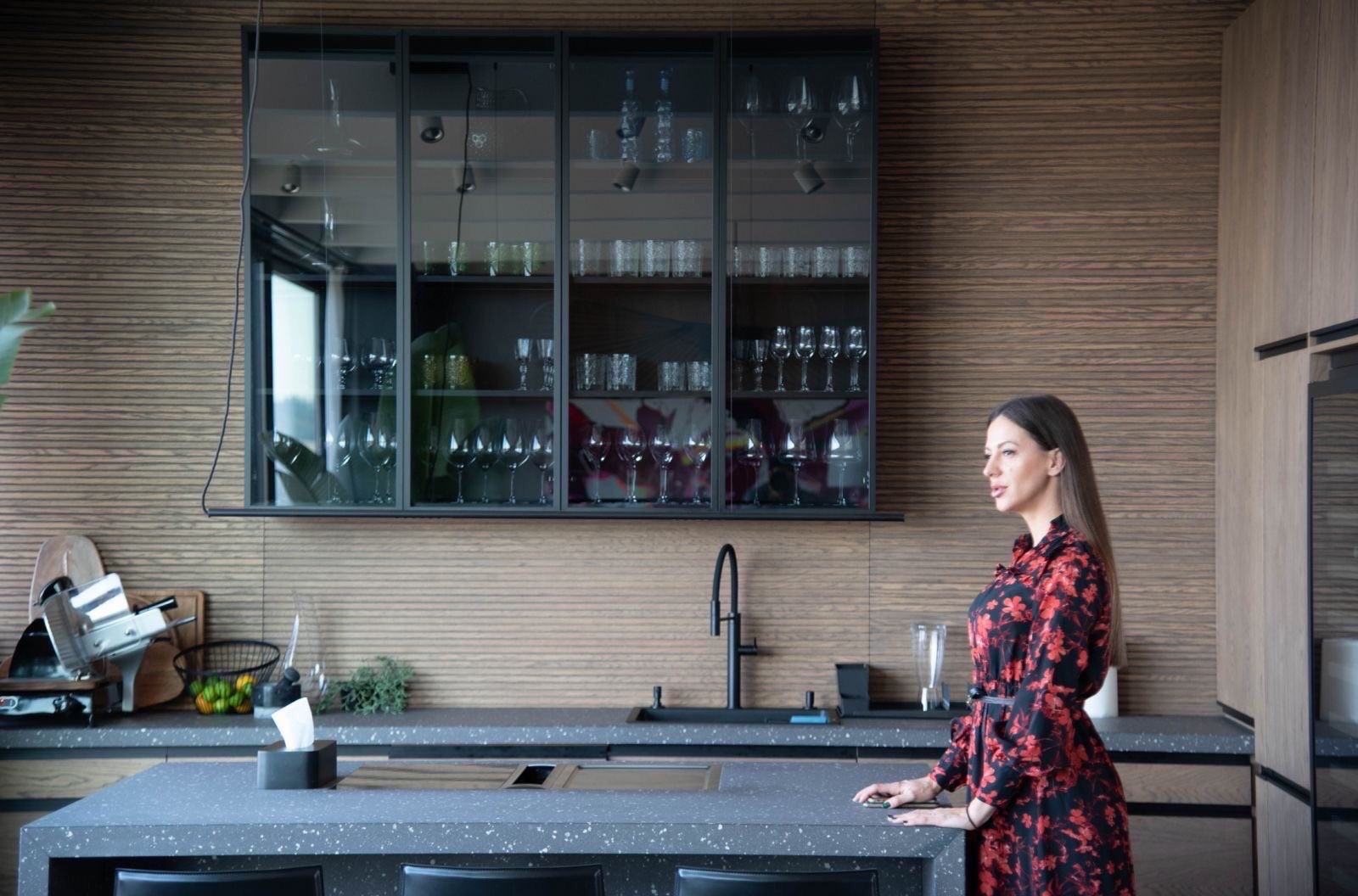
Photo: Eurodom
The atmosphere that is created around it while, on the one side, someone is preparing food and, on the other, others are tasting it and communicating has become imperative when creating the kitchen space.
INSTEAD OF A BAR COUNTER, A MINI DINING TABLE
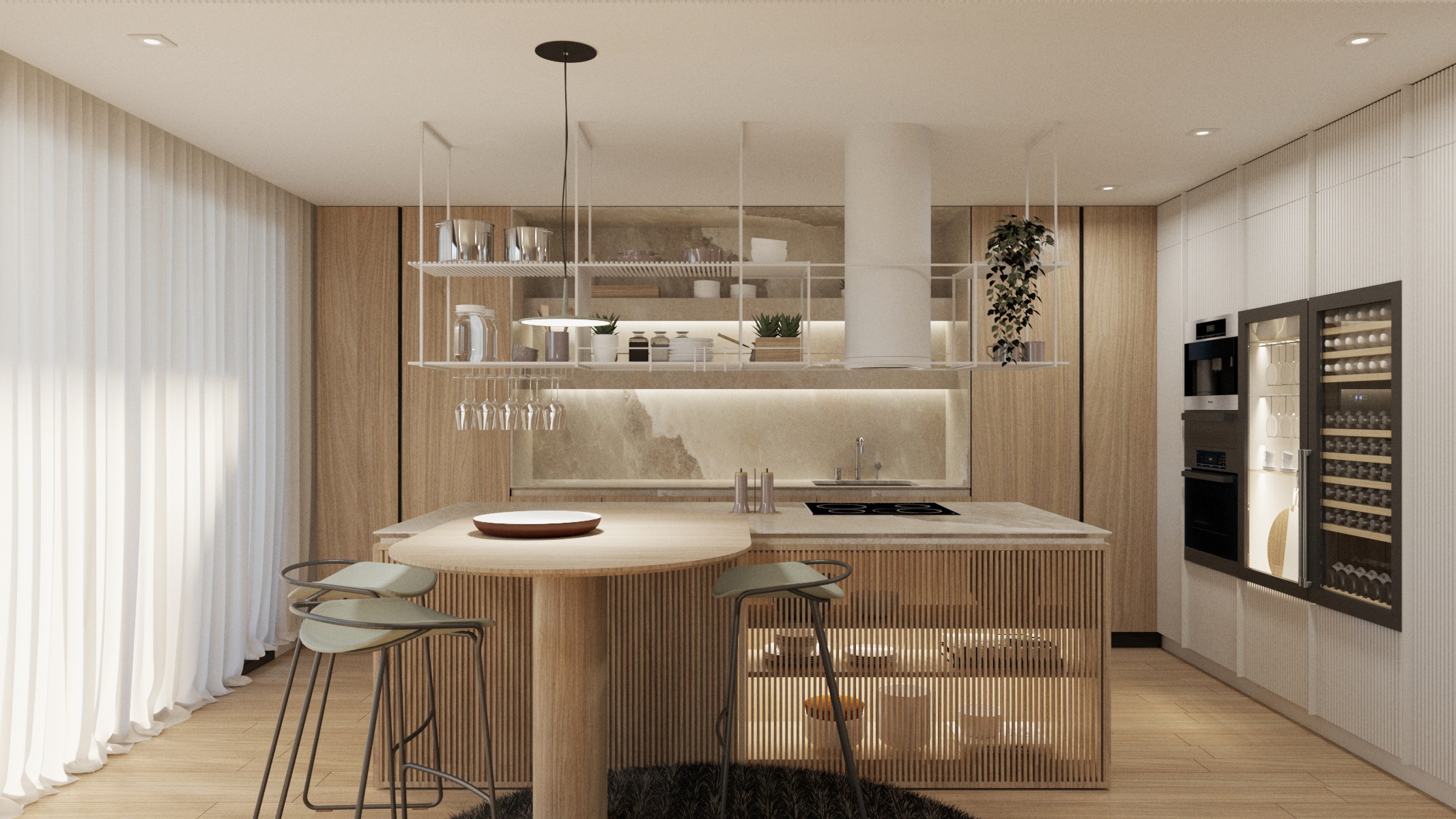
Apartment M, Dedinje / Photo: Boris Nikolašević
As an extension of the kitchen island and a more developed variant of the bar counter, there is often a need to design a mini dining table that rests on the counter itself. The use of the kitchen island for dining for the whole family has become more common, so its transformation with an addition in the form of a mini table is a logical functional sequence. In smaller flats, it is regularly the only dining space, and in bigger apartments, it is frequently utilized more often than the actual dining room.
MATERIALS
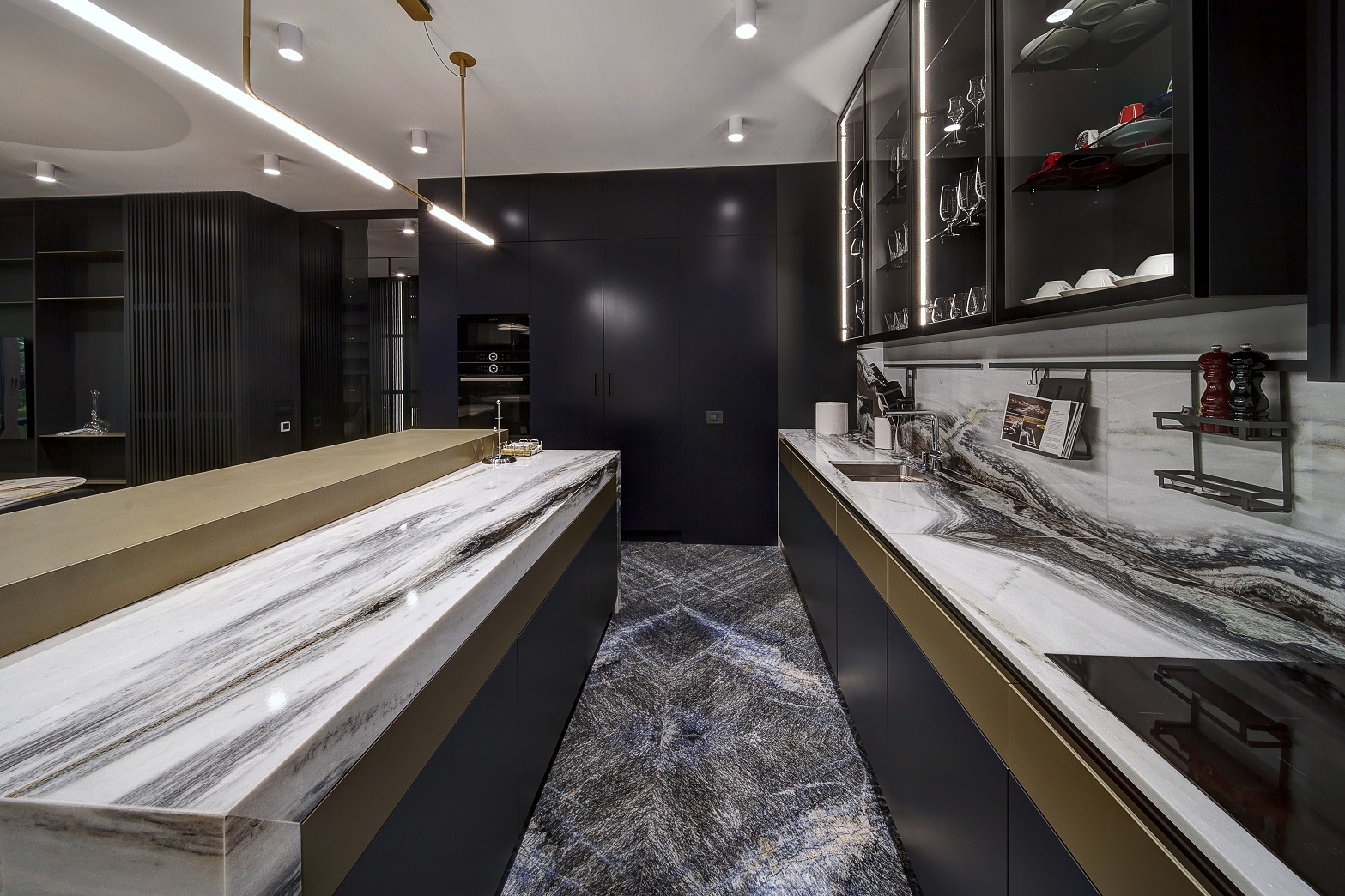
Apartment K, Vračar / Photo: Boris Nikolašević
The palette of finishing materials used in the kitchen is diverse and depends on the place where it is installed. The most demanding positions are worktops, due to the need for a high degree of resistance to temperature, wear, and porosity. Many marbles that look wonderful are not practical because they show traces of use after a short time. Because of this, granite ceramics are implemented as an alternative, with designs that are true to natural stone. In addition to standard processing in ceramics and stone, resistant artificial materials like quartz, compact, glass (or mirror), microcement, and heat-treated wood are often used. Cabinet fronts and bodies are mostly made of lacquered or veneered MDF, glass, and refined chipboard, and there is no limit to the combination.
LIGHTING
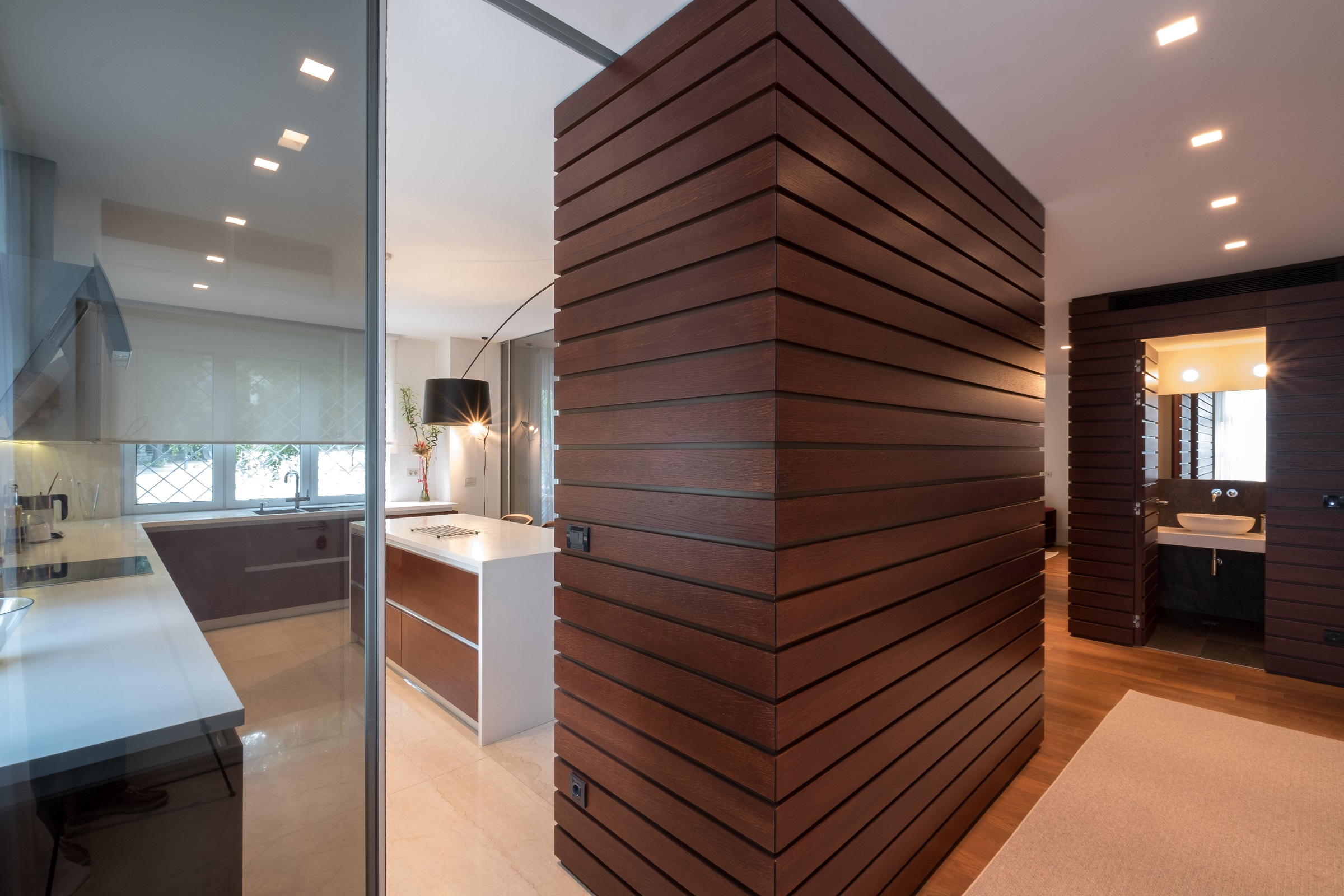
Apartment S, Senjak / Photo: Boris Nikolašević
Lighting plays a very important role in creating the experience of life and work in the kitchen. In addition to functional lighting (in the architectural sense), there is also decorative lighting, whose role is to illuminate a certain zone but also to create a visual experience of the space. Working with professionals is necessary for effectively designed lighting, and we create various scenarios with them.
STORAGE
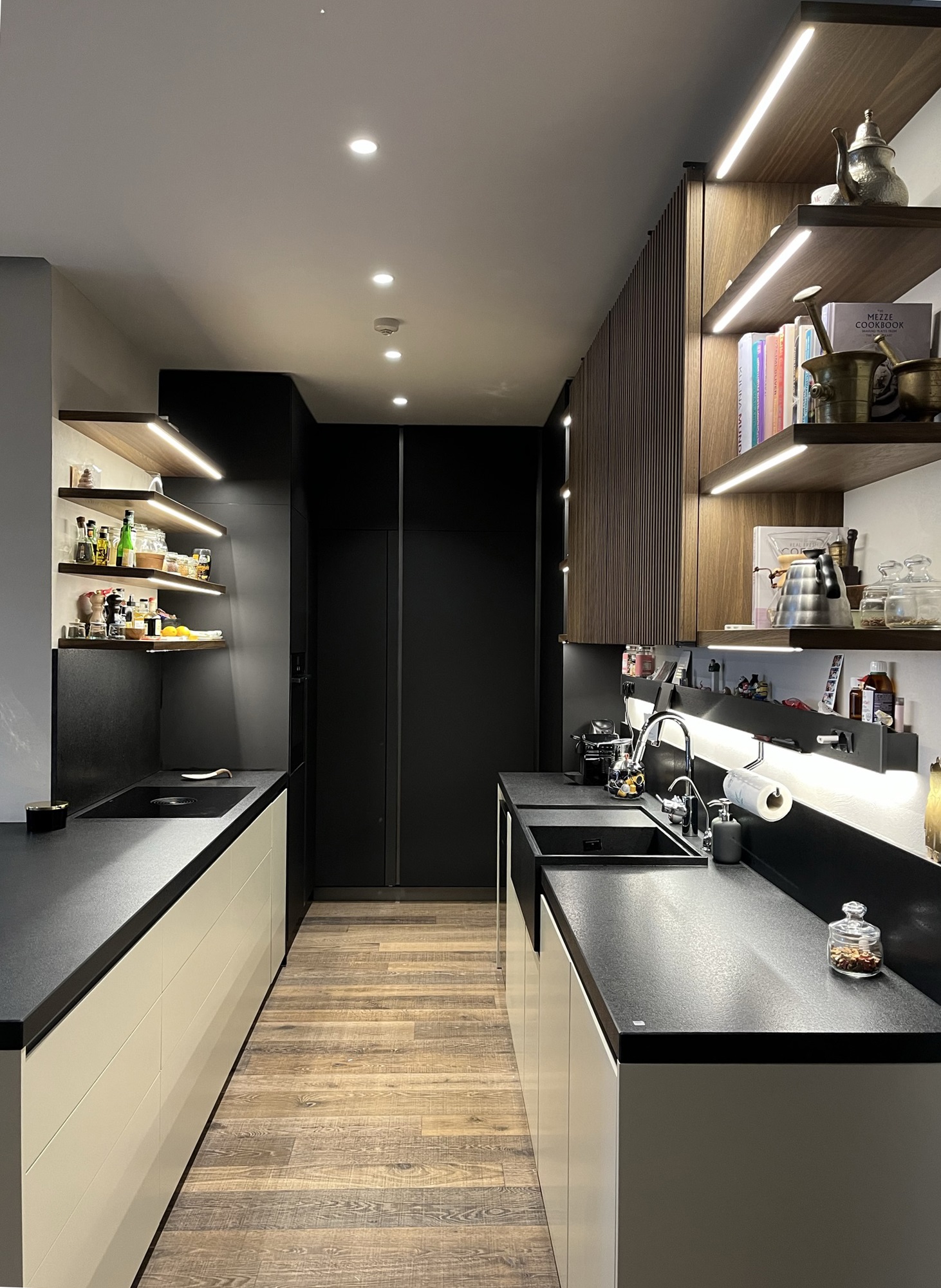
Apartment M, Dedinje / Photo: Boris Nikolašević
The option of leaving food supplies for food preparation is always welcome, so the storage area is one of the standard parts of the kitchen when designing. The need for them has grown significantly as the tendency for small kitchen pantries to be absent from the design of residential units has increased, either due to the lack of space in small apartments or due to expensive square footage. Today, the pantry is most often hidden behind tall kitchen elements, next to built-in refrigerators, above and below the built-in oven, or in parts of the kitchen island. The pantry is often equipped with rich and useful, carefully designed hardware for sorting food, all with the aim of making the interior of the kitchen elements easier and more transparent.
By: Marina Lazović
Photo: Boris Nikolašević